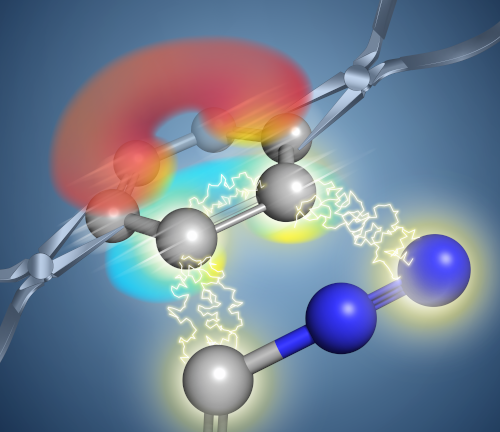
A team of researchers in the USC Department of Chemistry have made a significant discovery which will be detailed in their article published in the June 2023 issue of Nature Chemistry. This discovery not only bears significance for the field of organic chemistry but also provides indisputable evidence that the work of graduate student researchers is crucial for delving deep into a subject so that more foundational knowledge can be uncovered.
Professor Valery Fokin, head PI of the study, describes a common misconception about the field: “There is a naïve notion that chemistry is an exact science that has reached its maturity when, in fact, new discoveries that challenge existing paradigms are waiting for us every day.” Shubhangi Aggarwal, a PhD student in her final year, is the first author of the paper, and her tireless efforts to understand why a product-oriented experiment in the Fokin lab defied the team’s initial hypothesis resulted in rare fundamental advancement regarding breaking aromaticity.
The concept of aromaticity is typically introduced early in a chemist’s educational career as a chemical property that increases the stability of an organic compound. The current conventional method for engaging aromatic compounds in controlled chemical transformations involves applying high temperatures or harsh reagents. And so, one might assume that it is not possible to break aromaticity without extreme conditions. However, this study reports that highly reactive diazoalkenes can be used to facilitate the process under mild conditions. Along with breaking aromaticity, the research team was able to synthesize a new molecule termed “SulfoIn” at room temperature. SulfoIns and other annulated products obtained in the study are medicinally relevant molecules. They share a core of several known drugs, suggesting good prospects of their biological activity. The study also offers a reliable protocol for making new molecules from readily available materials. Most importantly, the study provides an example of employing ubiquitous and presumably unreactive arenes in chemical transformations, providing an opportunity for expanding the repertoire of molecular scaffolds that have remained unexplored until now.
This discovery was made possible using instrumentation at the USC Agilent Center of Excellence in Biomolecular Characterization. Also, given that one of the key takeaways of the study challenged scientific norms about chemical reactivity of aromatic compounds, it was necessary for the group to obtain solid evidence through computational data via high performance computing (HPC), which was provided by the USC Center for Advanced Research Computing (CARC).
As first author, Shubhangi emphasized that this article publication would not have been possible without the work of co-authors, Alexander Vu, Dmitry B. Eremin, Rudra Persaud, and Prof. Valery V. Fokin. “Each person made a vital contribution that lead to this recognition,” she explains.
Nature Chemistry is a prestigious chemistry journal that publishes once a month with a competitive selection rate. The fact that the paper, entitled “Arenes participate in 1,3-dipolar cycloaddition with in situ-generated diazoalkenes,” was chosen for this issue is a testament to the significance and quality of the research. A link to the online version can be found here: https://www.nature.com/articles/s41557-023-01188-z.